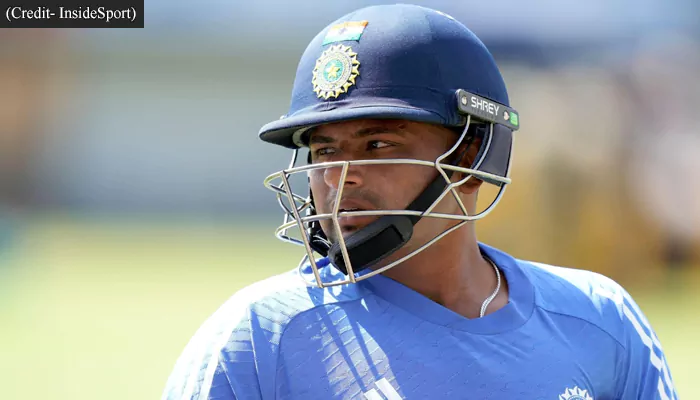BGT 2024/25: Not Sachin, Not Kohli—Guess Which Indian Batter Holds the Highest Score at Adelaide?
- Sayan Guha
- 1 year ago
- 4 minutes read

The story of an epic knock that redefined India’s fight Down Under
Memories of a historic 2003 innings arouse anticipation as India prepares for the second Test of the Border-Gavaskar Trophy at Adelaide Oval. This venue has witnessed cricket history, yet one Indian batter’s record is unequalled by Tendulkar or Kohli. In anticipation of a pink-ball battle, fans recall a knock that displayed resilience and talent against a powerful Australian team. Can India use that historic momentum to take a 2-0 lead in the series?
Adelaide 2003: The build-up
With batting disasters and tame defeats on their previous Australian tours, India came into the series as the underdog. The Brisbane Test ended in a draw, but a strong team effort prepared the stage for something special in Adelaide.
These are the actual numbers from the Adelaide Oval scoreboard gifted to me the year after I made my then top score of 242. Very fortunate to have a piece of the iconic scoreboard taking pride of place at home. pic.twitter.com/2XO4ECFwGD
— Ricky Ponting AO (@RickyPonting) August 5, 2020
Australia scored 556 runs in their first innings, thanks to Ricky Ponting’s stunning 242. With 85 for 4, India’s prospects seemed grim. The Adelaide Oval was seeing yet another possible Indian meltdown, but Rahul Dravid had other plans.
Rahul Dravid in Adelaide (2003) - 233 & 72*
— Dev Thakur (@MODIfiedDev1) December 20, 2020
India in Adelaide (2020) - 244 & 36
👀 pic.twitter.com/i2RFtPboMR
Enter ‘The Wall’
Dravid’s knock of 233 was a masterpiece in Test batting, demonstrating his ability to balance technique and temperament. Dravid faced 446 deliveries over nearly 10 hours, hitting 23 boundaries and a six, accounting for roughly 42% of India’s total in the first innings. His strike rate of 52.24 may appear small in today’s world, but it was ideal for the context of a lengthy Test battle. Dravid faced 32% of Australia’s deliveries, holding his own against feisty Jason Gillespie and Stuart MacGill.
His control percentage topped 85%, showcasing his near-perfect shot selection and judgement outside the stump. When India was 85 for 4, he formed a match-saving 303-run partnership with VVS Laxman, accounting for 76.9% of the stand’s total runs. India finished their first innings with 523, behind by only 33 runs. Dravid had overcome not just the Australian bowlers, but also the psychological wounds from prior travels.
Agarkar’s redemption arc
If Dravid’s batting laid the groundwork, Ajit Agarkar’s bowling provided the finishing touch. Agarkar was often mocked for his famed duck streak in Australia, but he silenced detractors with a remarkable 6 for 41 in the second innings.
The Australians collapsed for 196, leaving India with a challenging target of 230 against a world-class bowling assault on a worn-out wicket.
The final push: Dravid’s 72 seals it
India had a rough start in chasing 230. Virender Sehwag’s quick 47 set the tone, but wickets dropped often. Tendulkar scored a critical 37, but at 170 for 4, India’s jitters began to show. Enter Dravid again.
Dravid, also known as The Wall, held steadfast throughout the mayhem. His undefeated 72 came from 170 balls, including seven boundaries. The innings wasn’t showy, but it emanated calm and accuracy, something India urgently needed.
Laxman fired a quickfire 32 to relieve pressure before collapsing at the finish line. In the 73rd over, Dravid hit Stuart MacGill for a boundary, completing India’s historic four-wicket victory. His fist-pump celebration will live on in every fan’s memory.
By the numbers: Dravid’s Adelaide magic
First innings: 233 runs off 446 balls (23 fours, 1 six).
Second innings: 72* runs off 170 balls (7 fours).
Match total: 305 runs – the most by an Indian in a single match at Adelaide.
Man of the Match: Rahul Dravid.
Before this Test, Dravid had scored only 137 runs in eight innings in Australia, averaging less than 20. He virtually quadrupled his total in one match, culminating in a series-defining effort.












